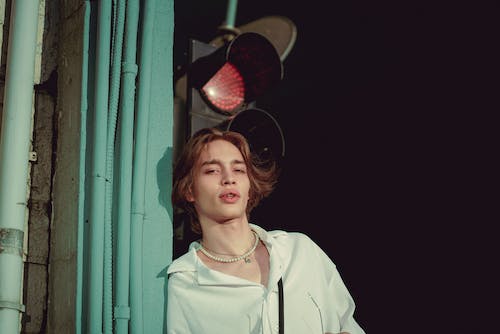From the fashion mecca of Paris to the sun-drenched beaches of the Caribbean, fashion photography has long used its settings and locations to convey a certain mood and meaning. In this article, we’ll explore the intricate relationship between location and fashion photography, and how these carefully chosen settings can add a new dimension to a shoot.
1. Setting the Scene: How Location Impacts Fashion Photography
Fashion photography is highly dependent on the location in which it is shot. To capture the desired aesthetic, it is important to pay close attention to the surroundings. There are several factors to consider when selecting a location including the background, character of the area, light, and of course the style of the clothing being photographed.
The choice of location will hugely influence the overall feel of the fashion images. For example, a rural beach setting will produce a much different look than the urban streets of a city. Each location will bring its own appeal and desired style to the shoot. This is why scouting for the right location is vital.
Urban style fashion shots benefit greatly from interesting backdrops, such as graffiti walls or cobbled streets. This is often the best choice for street style shoots as they give the photos a gritty and edgy feel. If there’s an interesting modern street that could provide a stylish edge to the photos, then it’s worth considering.
In contrast, natural backdrops such as beaches, forests or countryside can give fashion photos a more romantic and care-free feel. If you’re going for a vintage feel, then opting for old roads in abandoned villages might be a good choice – the crumbling texture of old buildings can really create an interesting contrast between the clothing and background.
- Look for interesting modern backdrops for an edgy urban feel.
- Natural backdrops can give fashion photos a dreamy or romantic vibe.
- Abandoned buildings or old roads create interesting contrast and textures.
- Scout out a location before committing to make sure it meets the desired aesthetic.
2. Capturing the Moment: The Artistry of Fashion Action
Fashion photography captures the transformative power of clothes, shoes, and accessories — transforming individuals through characterization, style, and beauty. In fashion action photography, capturing the moment requires an extra level of artistry, as motion and expression come to the fore in a captivating image. Here’s how fashion action photography has evolved over time — and how it continues to shape the fashion industry.
1. A Brief History of Fashion Action Photography
Action photography has been part of fashion photography since the beginning. In the 1920s, fashion photographer George Honer created iconic images of a model leaping in mid-stride, the new waves of movement lending a dynamic energy to his work. Over time, fashion photographers focused on the thrill of movement, with Ernst Haas, Herbert List, and Clifford Coffin all producing iconic “fashion action” photos of models in motion with grace and energy.
2. Contemporary Trends in Fashion Action Photography
Today, fashion action photos are more diverse and varied than ever, incorporating a variety of creative techniques. For instance:
- Layering different elements together — using models, special effects, abstract shapes, and other effects — to create vibrant images.
- Experimenting with frames: changing angles, movement, stillness, zooming, and other techniques to create jarring or compositionally interesting images.
- Creating slow-motion images that bring the beauty of movement to life.
- Blurring the lines between photography and video, creating video-like action shots that make the page come alive.
These techniques have been embraced by a diverse New Wave of fashion photographers, and encompass a range of styles, media, and creative approaches.
3. Exploring New Frontiers of Fashion Action Photography
As fashion photography technology evolves, so too does the art of fashion action photography. GIFs, slow motion videos, 3D photography, and laser scanning are just a few examples of the new technologies being deployed to capture the moment in bold and unique ways. As we move into ever-faster-paced lives, action photography will continue to evolve, leading to ever more fantastic, expressive, and beautiful images.
3. Letting Style Stand Out: Crafting the Perfect Setting
Creating just the right atmosphere for your event is a challenging but essential part of its success. There are many little touches and decisions that when worked together can look like a carefully curated masterpiece.
- Choose Wisely: Plan carefully in terms of color palette and texture. Look at each item in its surroundings and make sure the overall aesthetic works together.
- Trust the Flow: Consider the visual impact of how guests will move throughout the space. Balance the design elements around clear aisles and paths without overcrowding.
- Make it Personal: Special accessories can liven up any setting. Include personalized decorations like family photos and unique mementos from your culture.
Attention to detail is the hallmark of creating the perfect backdrop. Consider the texture of furniture, the hues of accent pieces, and the sparkle of soft lighting. All these pieces should work harmoniously to pull together the event.
When crafting the scene, don’t be afraid to mix elements. A mismatched chair with a bold pillow can create a surprising and fun atmosphere. By drawing from a variety of styles, you can discover the perfect atmosphere that’s unique to your event and memorable to your guests.
4. Elevating Fashion Photography: Bringing Global Settings to Life
Fashion photography is a worldwide art form. It is a chance for people to capture the beauty and diversity of global fashion trends in unique settings. Capturing the spirit of a global community is no small task, but these photographers strive to elevate fashion photography through creative and powerful visuals.
- Exploring Natural Settings: Fashion photographers take the opportunity to explore natural settings with their shoots. From shooting exotic coasts and rolling hills to capturing the beauty of the urban cityscape, these photographers capture fashion photos that embody the spirit of a certain place.
- Telling Visual Stories: These photographers also aim to tell stories with their visual designs. Rather than just focusing on pieces that are fashionable, they strive to take elements of the culture of a location and create a cohesive message for each photograph they take.
- Connecting to Followers: By making each fashion production international, photographers are able to better connect with their followers. Capturing the uniqueness of global styles, they capture people’s hearts and imaginations with each image they take.
By making international fashion productions the focus of their work, fashion photographers are able to tell visual stories and capture the essence of global fashion. Through thoughtful, meaningful imagery, these photographers take fashion photography to the next level, bringing life to global settings.
Fashion photography is a fascinating art, taking pictures of models with clothing in all sorts of places around the world. It’s what enables us to be taken away to exotic locales and beaches that we may never physically visit. But, it’s not only the locations, it’s how the photographer captures the light and the colors, mixing them with the colors and styles of the clothing to really bring out the beauty of the location as a backdrop for the model. Location, fashion, and action remain the trio that fashion photographers use to create stunning works of art that we can enjoy from our homes and environments.


